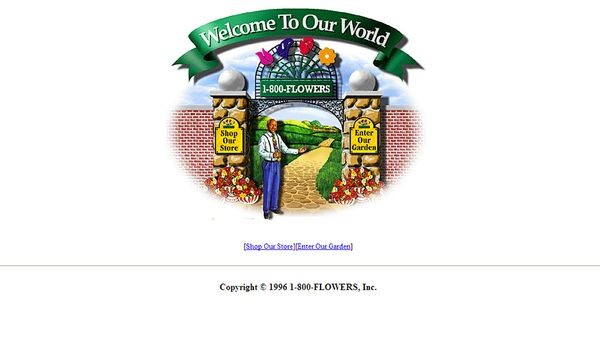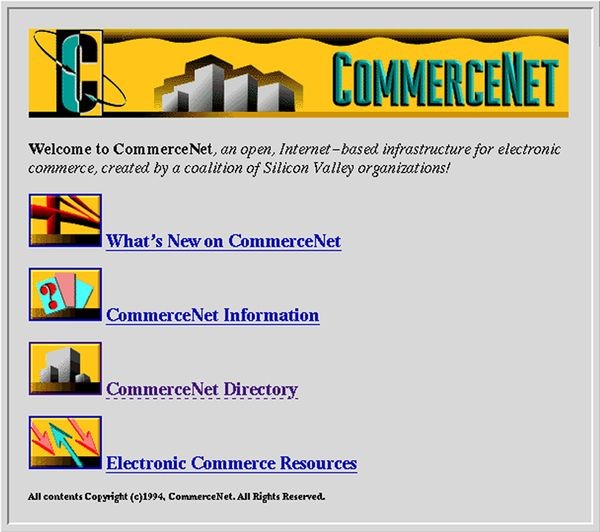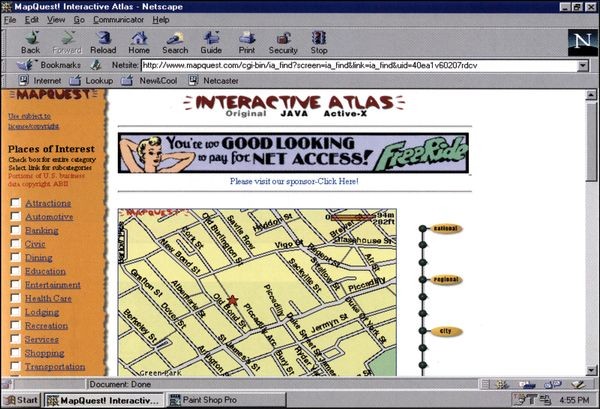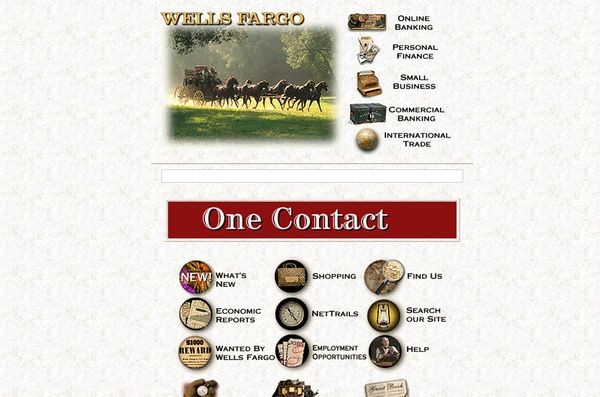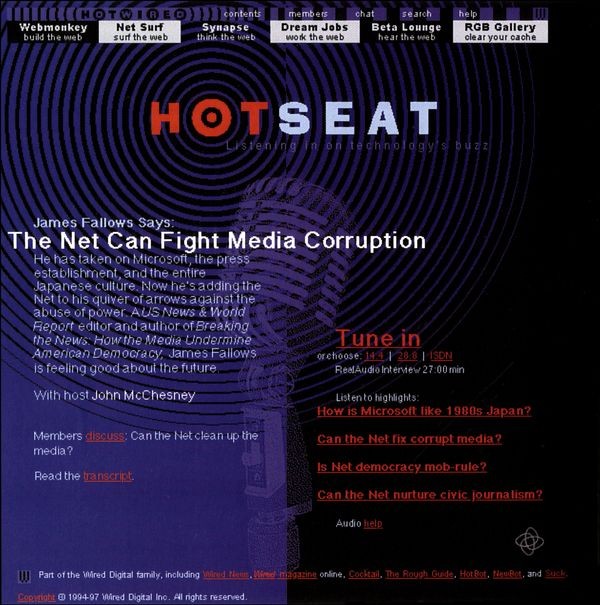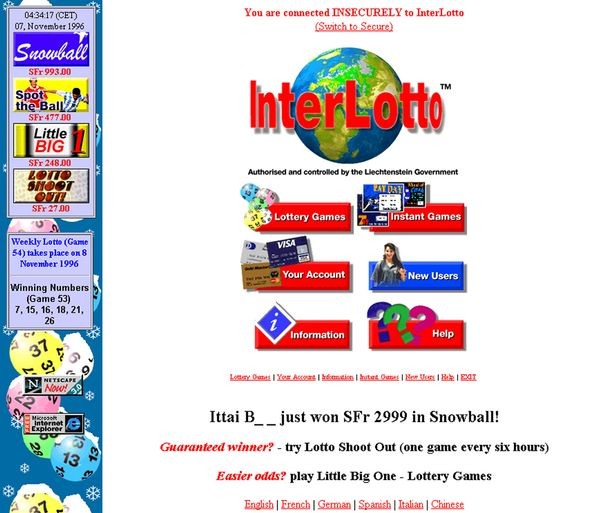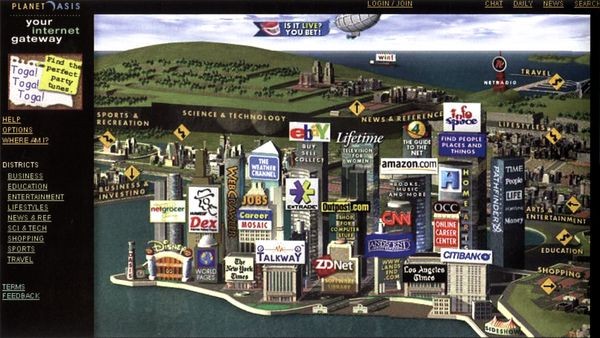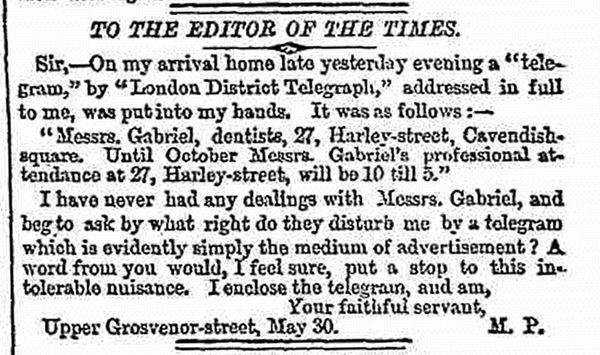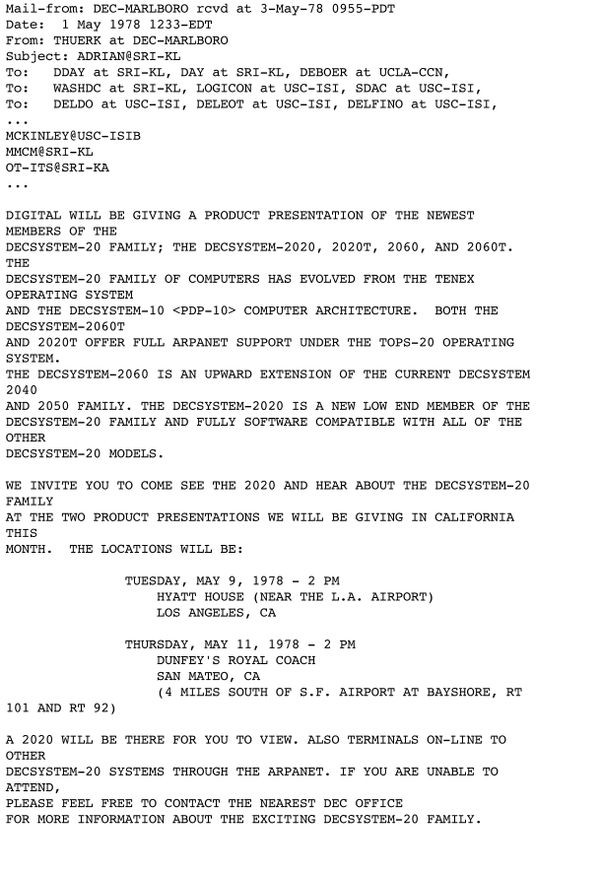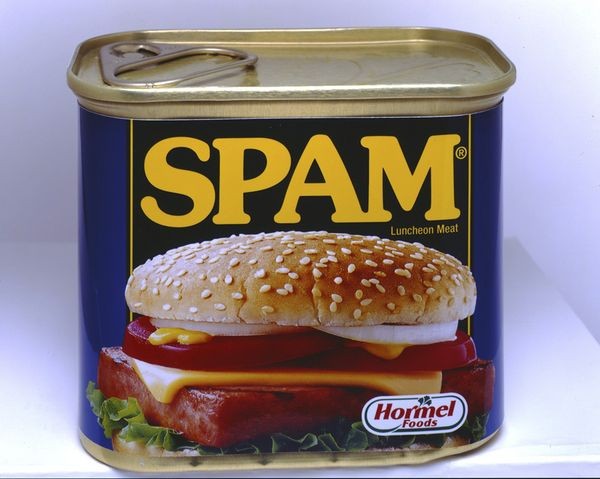Electronic Commerce
1-800-Flowers
This New York flower shop chain went online with CompuServe in 1992, and was one of the first retailers to have a Web site, in 1995. By 2001 it was a public company worth $385 million.
The Electronic Marketplace: E-Commerce
A century before anyone clicked “buy” or filled an online shopping cart, e-commerce had started – on telegraph wires.
Early computer e-commerce was mostly business-to-business: price quotes, order entry, and money transfers. E-commerce came to the average consumer in the 1980s on France’s Minitel, and in the 1990s on the Web.
Remote Shopping
The 1840s telegraph electrified – literally – an already growing market for remote transactions by mail.
Telegrams carried business transactions and price quotes. Stock tickers were perhaps the first dedicated e-commerce machines. Western Union pioneered electric money transfers for consumers in 1871.
In the 1980s, pre-Web networked information systems brought retail showrooms to living rooms, with France’s Minitel leading the charge. Many were friendlier to e-commerce than the early Web, offering micropayments, billing, authentication, and more. Web-based commerce started slowly, but accelerated with dizzying speed.
Telegram to Ringling Brothers
Telegrams became an indispensable tool for doing business. Ordinary people sent telegrams only for major life events.
View Artifact DetailThe Web is Open for Business
Companies were wary. Could commerce prosper in the once anti-commercial Internet created by government and academia?
In 1993, O’Reilly’s pioneering Global Network Navigator portal was running online ads. In 1994, Enterprise Integration Technologies (EIT) founded the CommerceNet consortium to encourage Web commerce, and they demonstrated secure credit-card transactions that year. By 1995 pornography and gambling sites were earning substantial profits.
Netscape’s spectacular IPO, and the success of online shopping sites like Amazon and eBay, finally convinced mainstream business to follow the pioneers into Web commerce.
Advertisement on O’Reilly’s Global Network Navigator (GNN)
Web portal site GNN pioneered Web advertising in 1993, with embedded ads similar to this example from 1995. GNN evolved from a bookstore kiosk version of “The Whole Internet User’s Guide” based on the early Viola browser.
View Artifact DetailCommerceNet consortium banner
CommerceNet helped jumpstart Web commerce by sharing techniques and tools. Early members included major banks, computer makers, Netscape and online services.
View Artifact DetailSex.com
Registered in 1994, sex.com’s early history was mostly a legal battle over ownership. But that didn’t stop it from being a profitable early adult site. Sex.com sold for over $10 million in the 2000s.
View Artifact DetailMapquest
In 1996, Mapquest adapted to the web, an existing base of computerized maps and software dating back to the 1980s. This created one of the first popular consumer mapping sites. The company had been in the map business since the 1960s.
View Artifact DetailWells Fargo
Banks were early adopters of centralized networks, both for back-end (transfers, other transactions) and consumer (ATMs, online services like Minitel and CompuServe) needs. But the decentralized, non-commercial Web and Internet was unknown territory. Wells Fargo was one of the first to take the plunge.
View Artifact DetailHotseat, Wired
Launched in 1994, HotWired was a very early commercial Web magazine, and included sections like Hotseat. It was the online spinoff of Wired, the brightly colored, snarkily written publication that both promoted and chronicled the Web revolution.
View Artifact DetailAuction Web (later eBay)
Founded in 1995 as AuctionWeb, eBay created and dominated a major new category—online auctions, for items from rare antiques to used clothing. Its growth powered through the dot-com bust; in 2002 it bought payment firm PayPal.
View Artifact DetailInterlotto
Started in 1995, this online lottery site was a pioneer of internet gambling in general, including online transactions and scratchcard games. Established in the tiny nation of Liechtenstein, Interlotto proceeds benefitted various charities, especially the International Red Cross based in Switzerland.
View Artifact DetailPlanet Oasis
Created by a subsidiary of PC maker Packard-Bell, this imaginative portal used a virtual city as a navigation interface to the Web, and was licensed by several major companies. It was part of a short-lived wave of interest in 3D Web interfaces.
View Artifact DetailSpam!
Letters. Telegrams. Phone calls. Most messaging systems cost something to use, which limits unsolicited correspondence. The Web and Internet were different.
In the mid-1990s, e-mail offered a promoter’s paradise: Free delivery to hundreds of millions of potential customers. With negligible costs, even infinitesimal response rates brought profits.
Telegraph "spam"
This is one of the earliest known unsolicited electronic messages. But telegrams were costly to send, which limited spam.
View Artifact DetailFirst spam on the ARPANET
In 1978, DEC salesman Gary Thuerk announced a new computer model by sending unsolicited email.
View Artifact DetailSpam advertisement
Monty Python’s skit repeated the name of the canned pork product over 100 times. In the 1980s Spam became the description of repeated unwanted online messages.
View Artifact DetailHow to Make a Fortune on the Information Superhighway : Everyone's Guerrilla Guide to Marketing on the Internet and Other On-Line Services
Spam was one of the first Web commerce experiments. Two immigration attorneys started sending out mass emails advertising their service, which instigated a nationwide furor. They published this book as a spammer’s manifesto.
View Artifact Detail